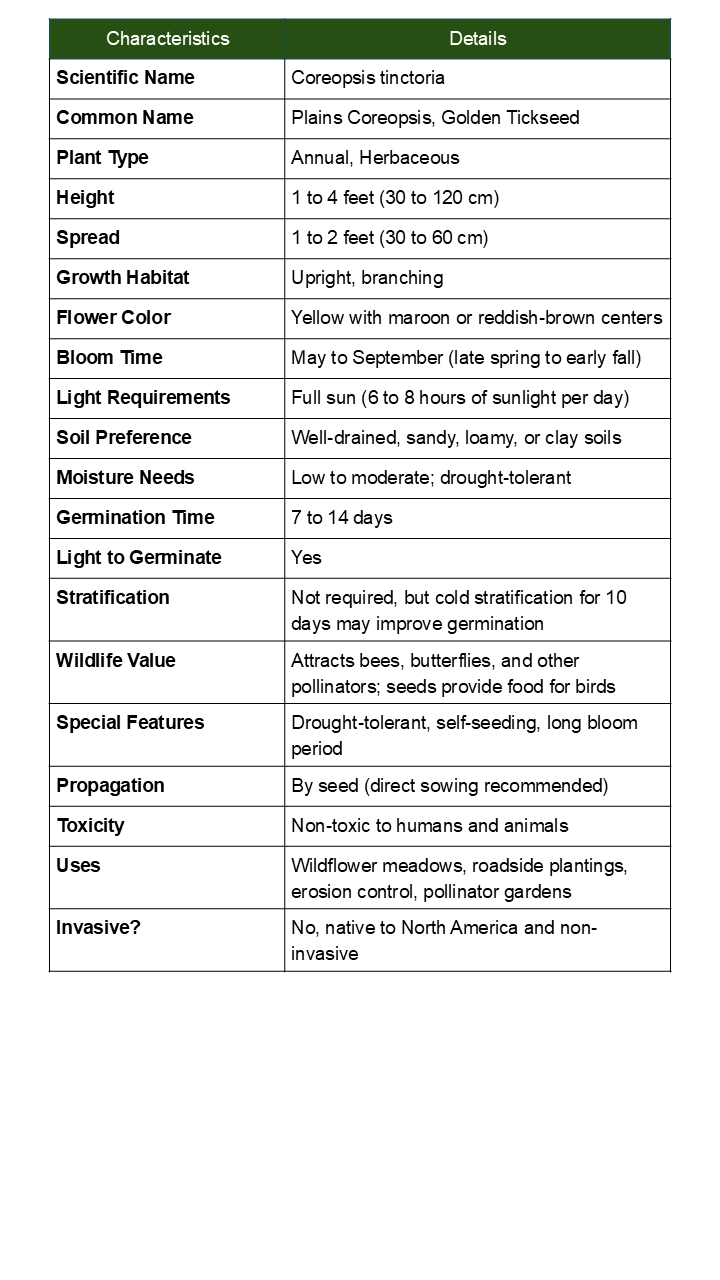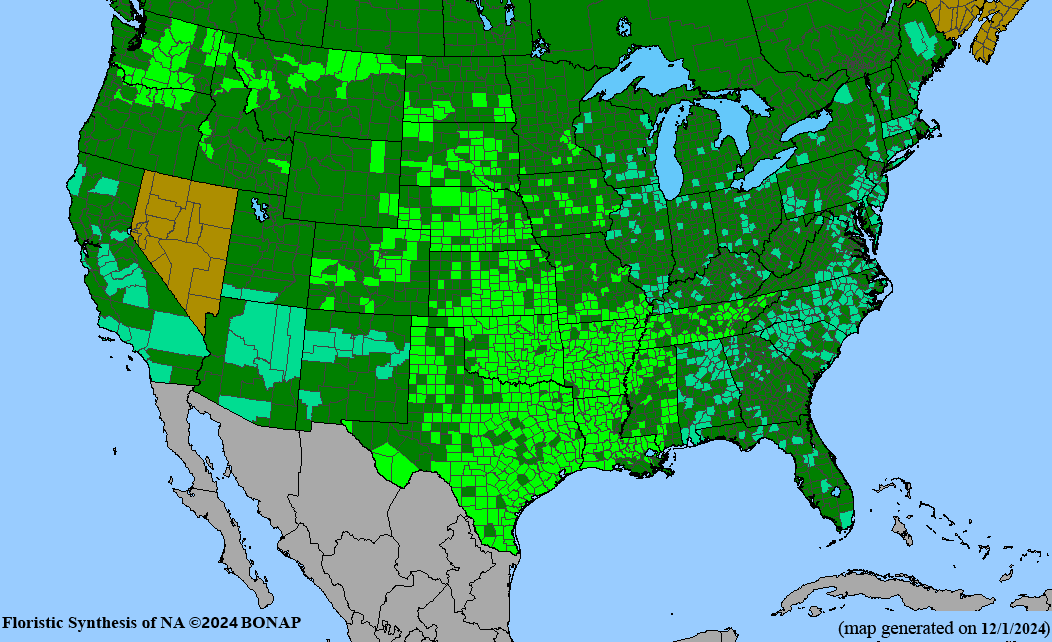Plains Coreopsis Tall Red Seeds - Native Annual Wildflower (Coreopsis tinctoria) for Bold Gardens
Regular price$4.00
/
Tax included.
3 reviews
🌺 Experience the Dramatic Beauty of Plains Coreopsis Tall Red
Discover the stunning variation of Coreopsis tinctoria that creates spectacular displays of deep red and burgundy flowers with golden-yellow edges. This tall, striking native annual produces masses of vibrant blooms from early summer through fall, bringing bold color and exceptional wildlife value to your garden.
✨ Key Features:
- Height: 3-4 feet tall with impressive upright habit
- Bloom Time: June through September (continuous blooming)
- Flower Color: Rich red and burgundy petals with bright golden-yellow edges
- Native Range: Throughout North America
- Life Cycle: Annual that readily self-seeds
- Sun Requirements: Full sun
🦋 Outstanding Wildlife Benefits:
- Essential nectar source for butterflies, native bees, and beneficial insects
- Attracts goldfinches, sparrows, and other seed-eating birds
- Supports over 40 species of native bees and butterflies
- Long blooming period provides consistent pollinator support
- Self-seeding habit creates natural wildlife corridors
🌱 Easy Growing Guide:
- Soil: Thrives in poor to average soils, excellent drainage preferred
- Drought Tolerance: Exceptional once established
- Maintenance: Extremely low maintenance, deadheading extends blooms
- Germination: Direct sow in spring or fall, surface sow
- Spacing: Plant 12-18 inches apart for dramatic displays
🎨 Garden Design:
Perfect for back-of-border plantings, cutting gardens, wildflower meadows, and naturalized areas. The tall stature and bold red coloration create stunning focal points and dramatic backdrops.
Bring months of bold, continuous color while supporting native pollinators. This striking tall variety is perfect for gardeners seeking dramatic impact with minimal maintenance.
FREE SHIPPING WITHIN USA



